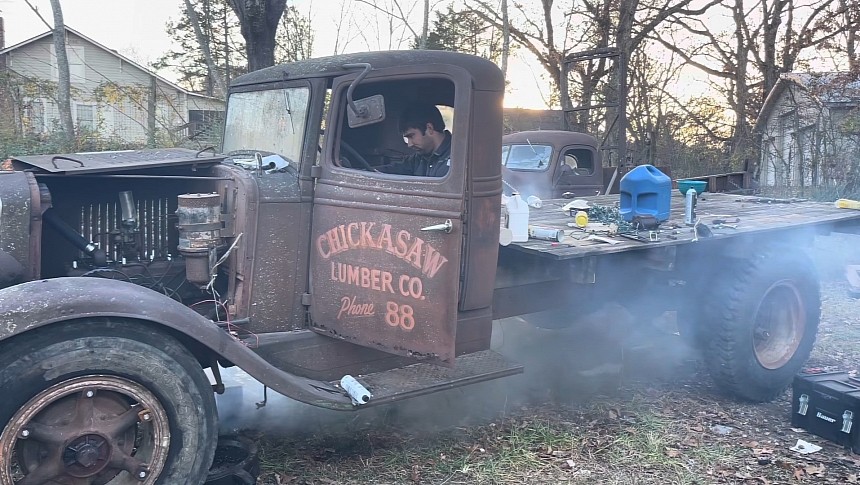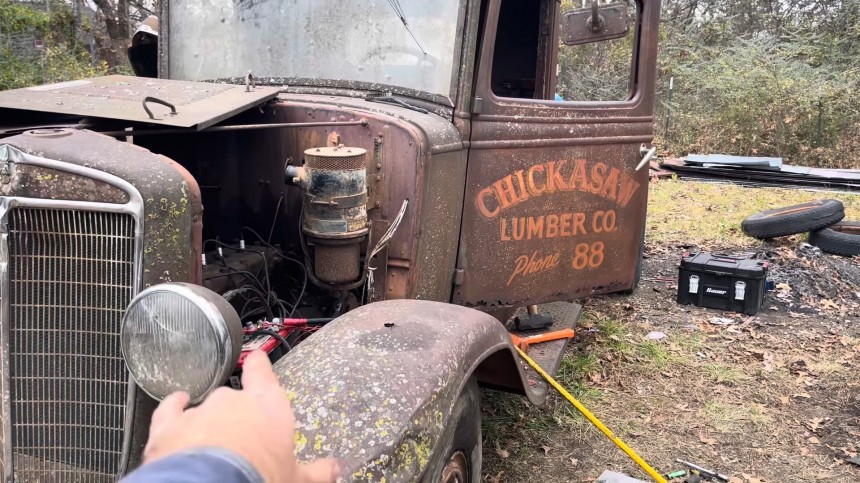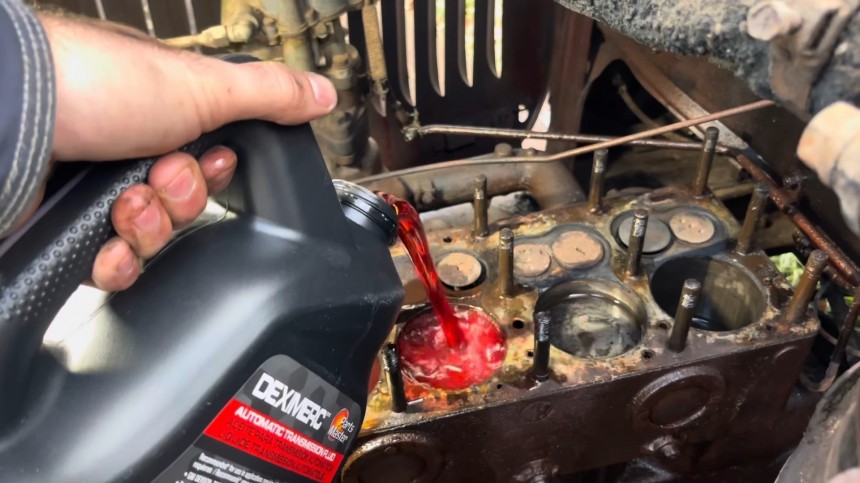What’s the most American vehicle of all time? Is it the muscle car? The oversized 22-foot-long (6.7-meter) two-door personal luxury hardtop? The pony car, perhaps? Well, yes, all these are just as American as the Star-Spangled Banner. Still, the pick-up truck is the undisputed champion and holder of the title. The debate is ‘Who built the first one?’ – and none of the Big Three can claim bragging rights.
Depending on the perspective, we could say that Henry Ford made the utilitarian platform famous. Still, he wasn’t the first American company to lay down a jack-of-all-trades vehicle. A decade before the Model T One Ton Truck was assembled, in 1917, International Harvester was already teasing rural prospects with a vehicle of the same concept.
By 1913, International was already selling three pick-up trucks, so Ford was playing second fiddle either way. As for Chrysler and GM, they joined the party – emphasis on joined, as in ‘didn’t start it.’ International built its reputation of reliability, ruggedness, and ease of use (both operation and maintenance) with simple, robust, and honest machines for farmers. Little by little, the company expanded its portfolio and ventured onto non-agricultural territory.
Following the Great Depression, the International brand was strong on the market despite its obvious niche disadvantage against Detroit’s Big. True to its creed, the company was making sturdy trucks and other utilitarian vehicles that could take a punishment without crying about it. It was a time when cars and trucks were made of solid metal and other materials, dug up from their underground cradle by men with rolled sleeves wielding a pickaxe in one hand and dynamite in the other. The International pick-up truck was unbeatable and indestructible.
Don’t take my word for granted, but play the video attached and see how one 1935 C-30 International pick-up truck comes back to life after an alleged 71 years of retirement. That sounds unbelievable, but when was the last time we have seen a double-digit phone number? The Chickasaw Lumber Company could be reached by picking up the receiver, turning the crank, andt hen asking the operator for ’88.’ (What’s an operator? Someone who saw this International truck when it was new).
The vehicle has been sitting for a long time – some half a century, according to the vlogger who found it – in a field in Oklahoma before being repurposed as a permanent flower pot stand in a garden. And now, it's time to come back to life. The inline-six 213 cubic-inch motor (3.5-liter) is seized but reasonably clean. At least, nothing too serious that a good gulp of acetone and a hefty splash of brake fluid wouldn’t cure.
The starter is rusty and locked up, and the plugs are gone – little surprise here since the hood offers basic protection against the elements. Besides, 88 years is a long time (71 were spent in the open), even by International pick-up truck standards. Amazingly, the plugs come out – after some serious wrenching – without damaging the threads in the cylinder heads. The mechanic puts new ones in, and that’s it.
The heads’ gasket is also defunct, and it takes some good old elbow grease – and a crowbar – to take it out. The good news is that the valves and cylinders are in great shape, and once the starter is sorted out, the crank spins with admirable ease.
The transmission is another matter that will require more than the ‘Lubricate at Will’ approach. Then again, it supposedly ran last when Harry Truman was still in office, so let’s cut it some slack. And after seeing how the YouTuber brought the motor back to life, we can safely wait for him to get the tranny up and running again and the truck back on the road.
That beautiful valve-in-block straight-six was quite the performer back in 1934 when it was first put in the International C-30 truck, with a rated output of 78.5 brake horsepower (80 PS) at 3,400 RPM and 151 lb-ft of torque (205 Nm) between 800 and 1,400 RPM. It doesn’t sound like much, but compare it to its contemporary V8-powered Ford Model 50 specs of 75 hp (77 PS) and 144 lb-ft (195 Nm). Also, note that the International six-cylinder was slightly smaller than Ford’s 221-cube V8 (3.6-liter) but had a marginally higher compression ratio (6.4:1 C-30 vs. 6.33:1 in the Model 50).
This 47,789.4-mile (76,893.14 kilometers) venerable truck has a four-speed manual transmission mated to one of the three rear diff ratios offered (5.285, 6.166, or 6.60). I feel obliged to point out the three-decimal accuracy of the brochure – see it in the gallery – that convinced 21,391 Americans to buy a new C-30 truck in 1935. One of those workhorses of the roaring 30s is seen below, feistily punching again after a very long retirement, thanks to a hands-on Arkansas enthusiast with a knack for old trucks.
By 1913, International was already selling three pick-up trucks, so Ford was playing second fiddle either way. As for Chrysler and GM, they joined the party – emphasis on joined, as in ‘didn’t start it.’ International built its reputation of reliability, ruggedness, and ease of use (both operation and maintenance) with simple, robust, and honest machines for farmers. Little by little, the company expanded its portfolio and ventured onto non-agricultural territory.
Following the Great Depression, the International brand was strong on the market despite its obvious niche disadvantage against Detroit’s Big. True to its creed, the company was making sturdy trucks and other utilitarian vehicles that could take a punishment without crying about it. It was a time when cars and trucks were made of solid metal and other materials, dug up from their underground cradle by men with rolled sleeves wielding a pickaxe in one hand and dynamite in the other. The International pick-up truck was unbeatable and indestructible.
The vehicle has been sitting for a long time – some half a century, according to the vlogger who found it – in a field in Oklahoma before being repurposed as a permanent flower pot stand in a garden. And now, it's time to come back to life. The inline-six 213 cubic-inch motor (3.5-liter) is seized but reasonably clean. At least, nothing too serious that a good gulp of acetone and a hefty splash of brake fluid wouldn’t cure.
The starter is rusty and locked up, and the plugs are gone – little surprise here since the hood offers basic protection against the elements. Besides, 88 years is a long time (71 were spent in the open), even by International pick-up truck standards. Amazingly, the plugs come out – after some serious wrenching – without damaging the threads in the cylinder heads. The mechanic puts new ones in, and that’s it.
The transmission is another matter that will require more than the ‘Lubricate at Will’ approach. Then again, it supposedly ran last when Harry Truman was still in office, so let’s cut it some slack. And after seeing how the YouTuber brought the motor back to life, we can safely wait for him to get the tranny up and running again and the truck back on the road.
That beautiful valve-in-block straight-six was quite the performer back in 1934 when it was first put in the International C-30 truck, with a rated output of 78.5 brake horsepower (80 PS) at 3,400 RPM and 151 lb-ft of torque (205 Nm) between 800 and 1,400 RPM. It doesn’t sound like much, but compare it to its contemporary V8-powered Ford Model 50 specs of 75 hp (77 PS) and 144 lb-ft (195 Nm). Also, note that the International six-cylinder was slightly smaller than Ford’s 221-cube V8 (3.6-liter) but had a marginally higher compression ratio (6.4:1 C-30 vs. 6.33:1 in the Model 50).
This 47,789.4-mile (76,893.14 kilometers) venerable truck has a four-speed manual transmission mated to one of the three rear diff ratios offered (5.285, 6.166, or 6.60). I feel obliged to point out the three-decimal accuracy of the brochure – see it in the gallery – that convinced 21,391 Americans to buy a new C-30 truck in 1935. One of those workhorses of the roaring 30s is seen below, feistily punching again after a very long retirement, thanks to a hands-on Arkansas enthusiast with a knack for old trucks.







































